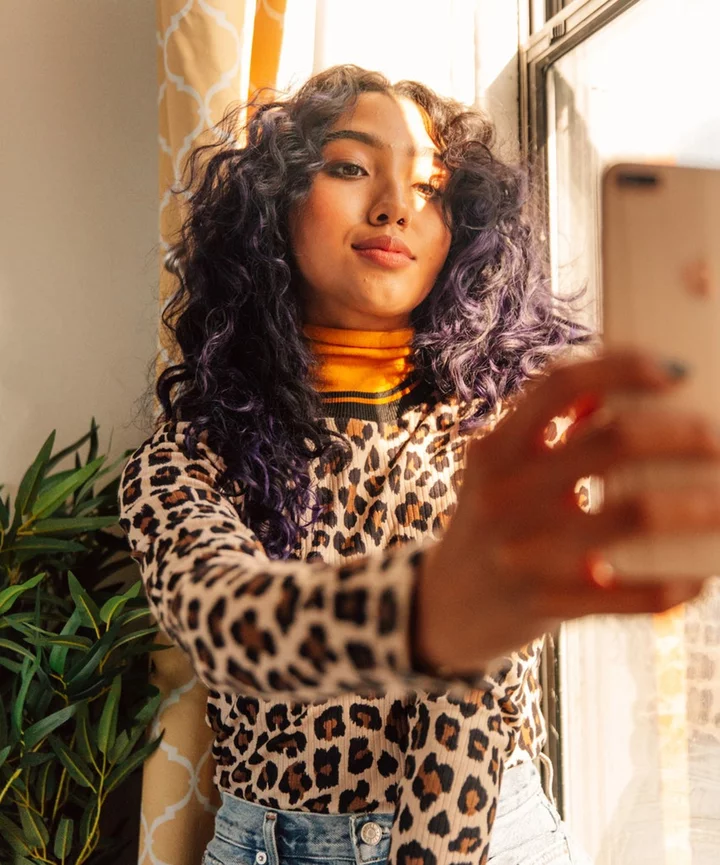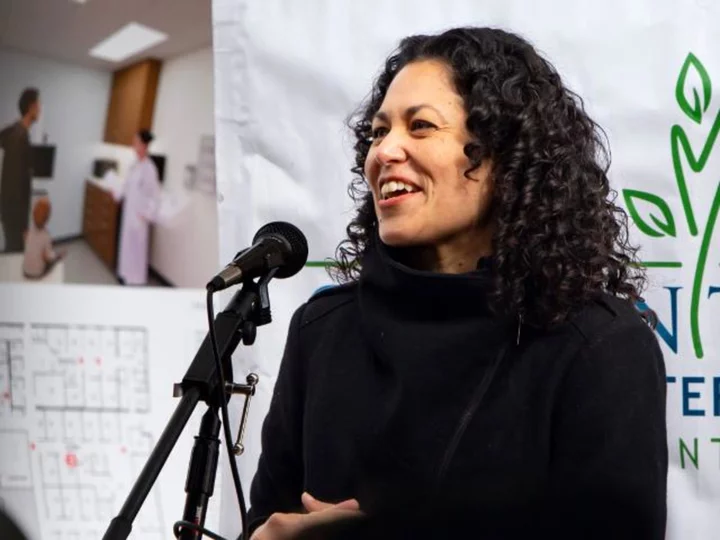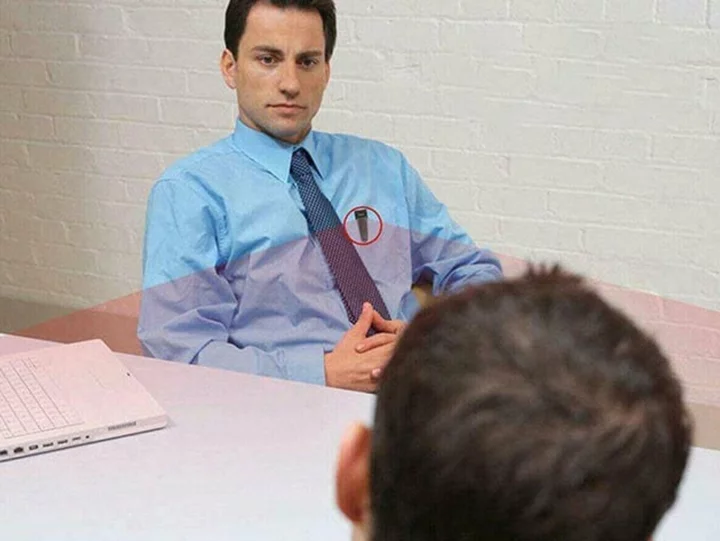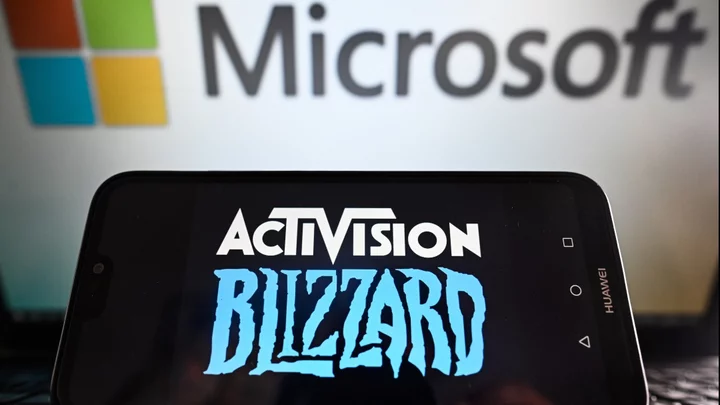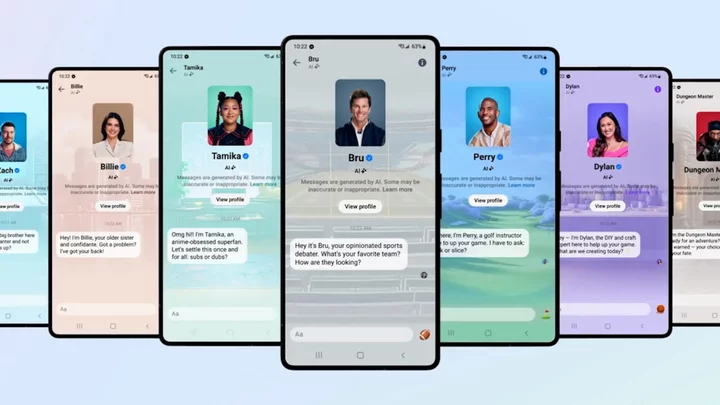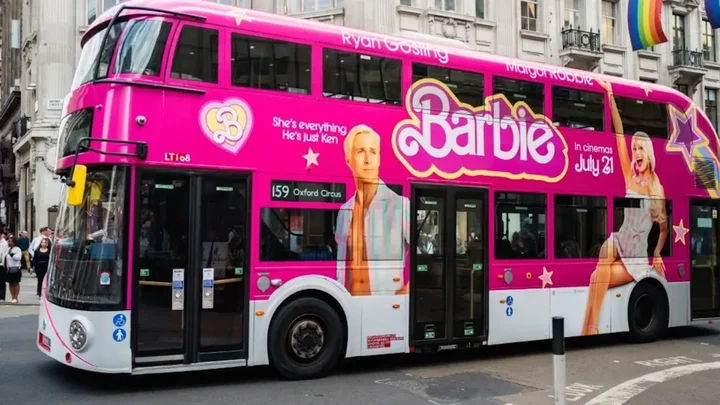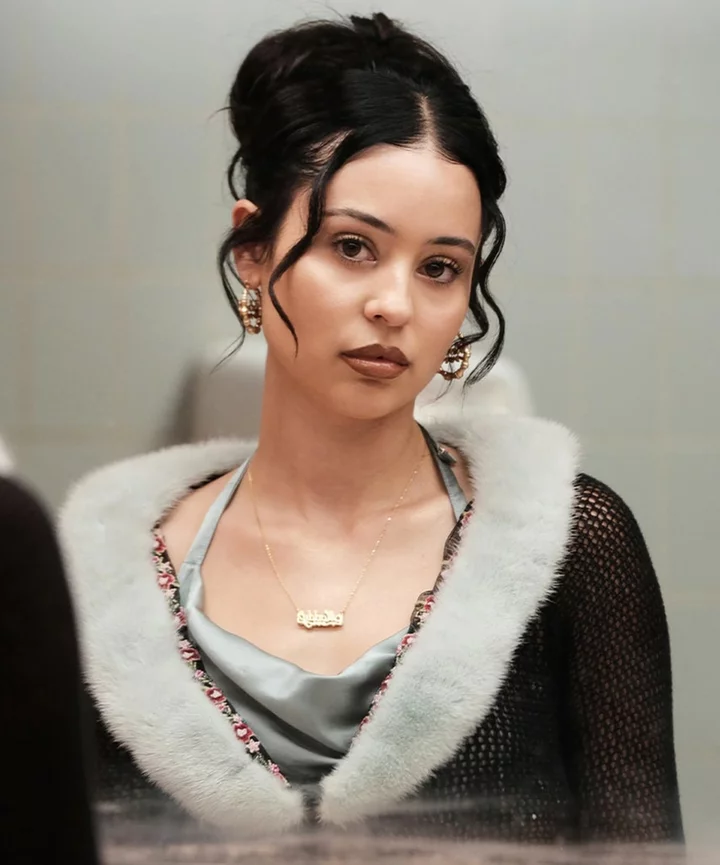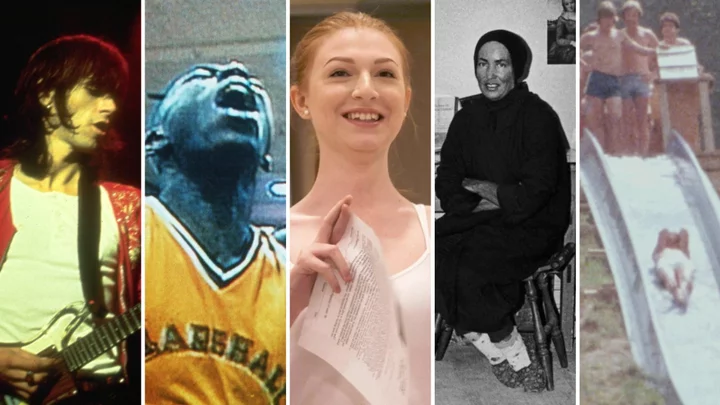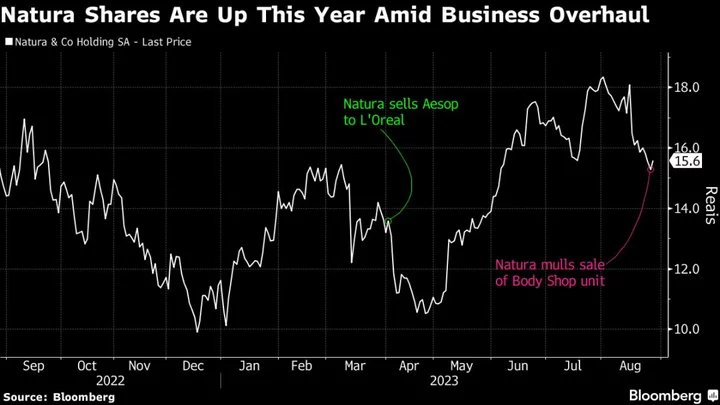For most traditional career paths, getting an education is a necessity. An electrician will spend hours mastering their craft, a nurse will study hard to pass their classes — and their licensure exams — and teachers will learn how to teach. But for the rapidly growing career of an influencer, there’s no formal schooling, no Get Ready With Me 101 classes or TikTok exams to pass, mainly because this profession still isn’t seen as “real” by those who exist outside of it. As influencing becomes a more common — and maybe even more respected — career, some are trying to make it more accessible by bringing influencer education to the forefront.
Take Ivanka DeKoning, a content creator and social media strategist, who gave me a personalized, hour-long crash course of her social media video masterclass series, or, in other words, the “How To Become An Influencer” class. We went through my (hypothetical) reasons for wanting to become an influencer, what my purpose in creating content was, posting strategies, SEO tips, how to feed the algorithm, and much more, all in 60 minutes — and it was, admittedly, a lot to take in.
There are many different kinds of influencer classes out there, from how-to’s to invoicing to brand deals to mastering one specific platform. The particular one I sat through, though, felt pretty introductory. Since I work in media, I was already privy to much of the info relayed, such as optimizing my Instagram bio or how often to post and when.
Beyond the crash course — which will cost you $700 — DeKoning also offers a six week course that goes into much more detail: You have homework, weekly meetings, and check-ins to see how your content is performing and how you’re growing as a content creator. She takes on only three to four clients a month due to the attention and intensive care she gives to her students. “I get so many clients who tell me they want to become Instagram famous,” DeKoning says. “They come to me with the mindset of all of the perks of an influencer and then when I tell them all the work they have to do, I think it really shocks them.” While I may not be willing to shell out $700 for this class, I can see how it could be useful for someone who essentially knows nothing about social media and wants an intro to the content creating world.
DeKoning acknowledges that as time changes, so do the platforms we use — meaning, so must her classes. “When you create a course on social media, you always have to update your content when the space changes,” she says. “What I love about my coaching courses is I have that flexibility of changing things based on what’s performing.” For example, TikTok went through a phase of promoting seven second videos, and now, the platform pushes out longer form content, which DeKoning can help you strategize — for a price.
DeKoning’s course offerings aren’t the only ones out there — there are many, many influencer classes that claim to be able to help you make it, ranging anywhere from free to thousands of dollars. Karly Polkosnik, 26, a lifestyle creator who posts content ranging from self love to personal finance, bought an influencer program for $900 in 2018 before plunging into the career full-time. “It was all about pitching brands and creating those relationships. It was the only influencer course that I ever bought and it actually was very worth it for me,” she tells Refinery29. “My opinions on the course industry are that most of them aren’t helpful. Most of them can’t teach you exactly how to replicate the success that the person who’s selling it has, however, this course that I took on pitching and relationship building, and that was actually very, very useful to me and I think very foundational in my influencer career.” Polkosnik currently has 1.2 million TikTok followers, 34,000 Instagram followers, and 9,570 YouTube subscribers.
Alexa Losey, 28, an influencer who has been creating lifestyle and beauty content since she was 16, isn’t so sure the more rudimentary classes are necessary, though. “Connecting with an audience… I think that’s something that can’t really be taught,” she tells Refinery29. “Of course you want your content to be seen, but there’s nothing that beats out a real personality. There’s nothing that beats out real connection with an audience.”
Losey’s career has spanned over a decade — she came up during the golden era of Tumblr and has survived and thrived through many platforms (remember Vine?). She was nominated for Breakout YouTuber of the year at the 2017 Shorty Awards, and currently has 841,000 subscribers on YouTube, 680,000 followers on Instagram, and 121,000 on TikTok. Right now, Losey doesn’t follow any specific strategy besides having a constant presence online. “It comes down to consistency, authenticity, and networking,” she says.
Influencers that “make it” seem to do so based on more than just hashtags and strategies and eye catching curations of content — they make it based on whether or not you, the audience, believes them. Likes them. Trusts them. And while all of the technical skills to become an influencer can essentially be taught, and utilizing hashtags and SEO practices and becoming familiar with a platform’s algorithm can put you in front of thousands — if not hundreds of thousands — of eyes, is it enough to make them stay?
No matter how many influencer classes you take, success might just boil down to whether or not people, well, like you. And while being likable isn’t necessarily a skill one can be taught, you can learn how to enrapture a community enough to stick by your side. Aaron Dinin, PhD, currently teaches a class at Duke University called Building Global Audiences, aka the TikTok influencer course, where students study how to grow a social media following through an academic lens. This past semester, 34 students were enrolled in the class. Dr. Dinin also teaches a social media production course in the fall with around 18-20 students, as well as a basic intro to personal branding on social media course that usually has 40-50 students in it each semester. He tells Refinery29 that to understand being a content creator, we must also recognize that being a creator isn’t exactly new.
Dr. Dinin compares today’s influencers to the poets, writers, and playwrights from way back when — the ones who were able to build a following IRL instead of online.“If you hopped in a time machine and you traveled back to, let’s say 1865, and you met Walt Whitman, what you would discover is that Walt Whitman wasn’t necessarily trying to be a great literary figure,” Dr. Dinin explains. “It turns out that poetry was like the YouTube of its day, and he was a YouTuber. And [Ralph Waldo] Emerson and [Henry David] Thoreau… they were the creators of their day.”
It sounds far-fetched, but he makes a point. The only new things are the platforms, and those platforms constantly change. The skills that transcend time are, truly, being able to build — and keep — an audience.
To become a successful creator in any time period, Dr. Dinin says it’s important to develop a critical eye for what works in building an audience now and why. As one can analyze a piece of literature or a poem, one can also analyze a 60-second TikTok, which is what the students enrolled in his class do. “One of my assignments that I’m always doing are these creative case studies,” he says. “I have my students go and identify a creator that they really like or that they might aspire to be and break down the creator’s strategy, what’s working and why, and what isn’t working and why. I want them to help develop that keen, critical eye.”
Another assignment is something Dr. Dinin calls “best, worst,” where students choose a piece of content from a specific creator that’s really successful and another piece of content that isn’t doing very well. “Why is this one doing so much better than the other?” Dr. Dinin asks his students. “As you start to identify why one is doing better than the other, you start to understand the fundamental principles of what works for building an audience.”
The main platform the students are analyzing content on is TikTok, where most new, young influencers have gained their followings and subsequent careers. Golloria George, 22, is one of them. While she’s never taken an influencer class, she credits her former mentor and current manager with teaching her the ins and outs of the profession. “She was very full-force on teaching me how to advocate for myself and what I should be doing in terms of SEO, how many times I should be posting, what I could be posting,” George tells Refinery29. “It was very helpful to have someone to talk to, especially when I had anxiety or I felt overwhelmed or burnt out from all the work that I was doing.”
Posting schedules, SEO tips, hashtags, and the technical side of strategizing content are important skills to have, sure — but they’re not everything. “The fundamentals of [influencing] and the structure of it can be taught,” Losey says. “But ultimately, the essence of what people want to engage in and the person that they’re investing their energy into following and supporting, you can’t teach it.”
Even if you’ve mastered both the technical and relatable aspects of being an influencer, getting yourself in front of an audience isn’t necessarily enough to keep one. You need to give them a reason to be loyal to you, to serve some kind of purpose in their lives, whether it’s to entertain, educate, or inspire. For George, she sees her content as filling a void for the audience of young people who look like her. “I noticed that there were a lot of young girls — specifically who looked like me, who had a darker complexion — that didn’t know how to do their makeup, literally like younger me, that didn’t have anyone that was in the beauty space,” she says. “I started seeing that growth maybe four to five months after I started posting consistently. I reached 100,000 followers in a very small amount of time, and it was big because there was no one else in the space who looked like me who was also on TikTok, doing what I was doing.”
While George’s videos are fun and informative, the way she’s been able to build an audience exemplifies the need for influencers and other public-facing figures to reflect the world around them in a real, authentic way. “You can post four-to-five times a day and do all the consistency work, but [you may not be successful] if you are not your authentic self on the internet and if you don’t relate to your audience in a way that makes them feel like they can come back to you and talk to you and want to watch your videos,” George says.
While DeKoning believes there’s an influencer out there for everyone, she also knows the animosity that comes with putting yourself out there to a sea of strangers. “You’re not for everybody,” she says. “I’m a queer influencer. I posted about my wife and I and our wedding, and I lost 500 followers. Every time I talk about my wife, I lose [followers]. That’s the nature of social media, there’s always negativity.”
It’s also hard to ignore the significant role that privilege plays into who becomes an influencer, most of which are notably thin, conventionally attractive, financially secure, white cis women who often have connections. “There’s still a lot of unseen maneuvering that goes on to make someone successful enough that they can actually make a living at it,” says Emily Hund, PhD, author The Influencer Industry: The Quest for Authenticity on Social Media. “And that’s such a rare outcome, too.”
And education itself often has a monetary hurdle — not all of us can afford to pay $700 for a single hour-long class, for example, or enroll in a private institution like Duke University, or even afford a place to live that’s well-lit and looks good on camera.
Dr. Dinin argues that there are two ways to teach content creation: One is the teaching of the platform and one is teaching of the principals. “I just caution people against anyone who [says they’re] going to make you TikTok famous. Like, that doesn’t matter,” he says. “You don’t want to be TikTok famous, because TikTok isn’t always going to be the primary medium.” What you want to do, as his class is named after, is build an audience — then leverage the platforms to serve you.
“It’s not about building a huge audience on any one platform. It’s about having some sort of audience that you control… then, those platforms are just tools to drive attention back to what you are trying to create,” he says.
Although there isn’t an influencing school or a college major dedicated to building your personal brand, there are plenty of resources out there to give you the tools to try — using them to build an audience, though, is all on you.

